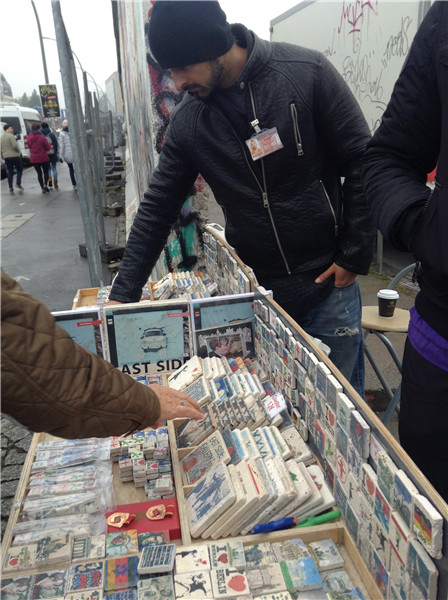Echoes of history and rapid change
 |
|
A vendor by the Berlin Wall at the East Side Gallery sells pieces said to be collected from the wall that was built in 1961 and torn down in 1990. MEI JIA/CHINA DAILY |
One thing that endears Berlin to me is that dining outlets and grocery shops are open late into the night, and are also open early during weekends, at least on Saturday mornings.
Berlin, with its rich history and central location in Europe, is known for its historical sites, cultural activities, nightlife and spirit of openness. So, travelers have a lot of choices when it comes to what they want to see and experience.
Traveling with a team of publishers and book reporters, we join a crowd walking from the Reichstag building to Brandenburg Gate.
To get a close view of the signature glass dome of the parliament building, remodeled by British architect Norman Foster in the 1990s, one needs reservations. So we view it from outside.
The gate, the symbol of Berlin and of Germany, was originally built in the late 18th century.
The goddess of victory and her chariot on top of it was once removed by Napoleon but later returned. The gate was rebuilt in 1957.
The plaza below is now a happy place, watched over by the goddess.
Not far from the iconic gate is the Memorial to the Murdered Jews of Europe, with 2,711 symbolic cement steles designed by Peter Eisenman.
Situated in the heart of Berlin, it showcases German reflections on the war and the Holocaust.
We also walk by Checkpoint Charlie along the Berlin Wall.
The city's Festival of Lights brightens up old architecture at night, giving it an exciting new look.
Museum Island is a spot that consumes half of a day during our trip.














